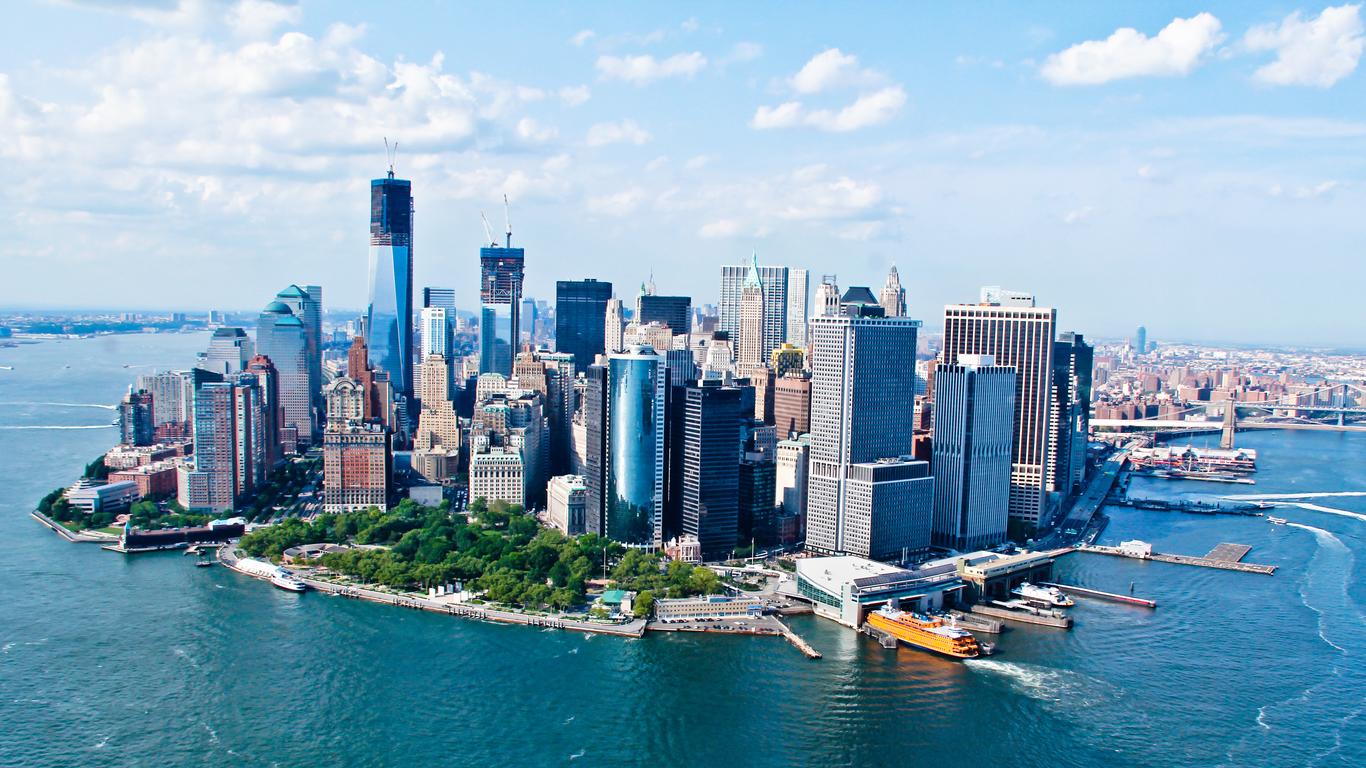Huddled around the southern tip of Manhattan Island, Lower Manhattan, or Downtown Manhattan as it’s often called,is where the city all began and today exhibits a vibrant blending of the old and new. It’s the heart of the Wall Street financial district and site of the World Trade Centre, together with landmarks like Battery Park that are entwined in New York’s history.
Architectural masterpieces such as the Manhattan Municipal Building and City Hall stand alongside the financial powerhouses of the Federal Reserve Bank and the New York Stock Exchange with its iconic Charging Bull sculpture, while Battery Park along Lower Manhattan’s southern tip is littered with historic sights that go back to the days of Dutch and British rule. It is here that the Twin Towers once stood and visitors can now pay their respects at the poignant 9/11 memorial, then ride the elevator up the remaining Freedom Tower to take in the city views. Amidst the high rise skyscrapers, there’s a few pockets of greenery, including the historic Bowling Green Park, a former cattle and grain market, as well as the 18th century St. Paul’s Chapel and impressive Trinity Church. The pedestrian mall of Stone Street has been beautifully restored to reflect its 17th century days as Dutch New Amsterdam, together with the 19th century buildings that line the South Street Seaport.
Lower Manhattan is well served by New York City’s subway system, with major hubs at both the World Trade Centre and Fulton Centre which connect to Uptown, Brooklyn, the Bronx and Queens, while the free Staten Island Ferry departs from the South Ferry Terminal. There are plenty of bus routes through Lower Manhattan, but the traffic can be notoriously slow and exploring on foot is a far better option, with the walk across the Brooklyn Bridge offering fantastic views back across its iconic skyline.
It was the Dutch who first founded a fur-trading post in what would later become Lower Manhattan, naming the settlement New Amsterdam in 1626. African slaves were imported to build Fort Amsterdam and defend the city against both Indian and English attacks, with the latter eventually conquering the area in 1664 and naming it after the Duke of York.





